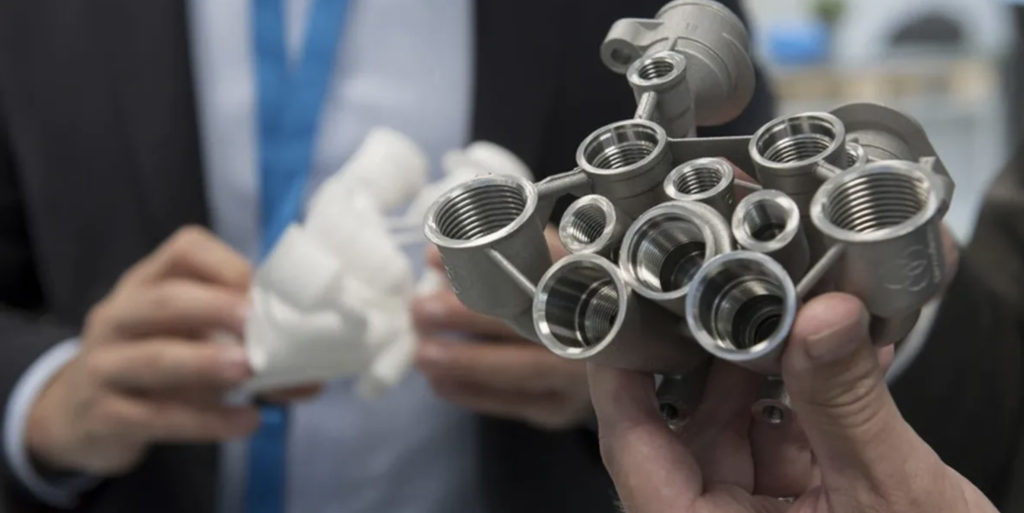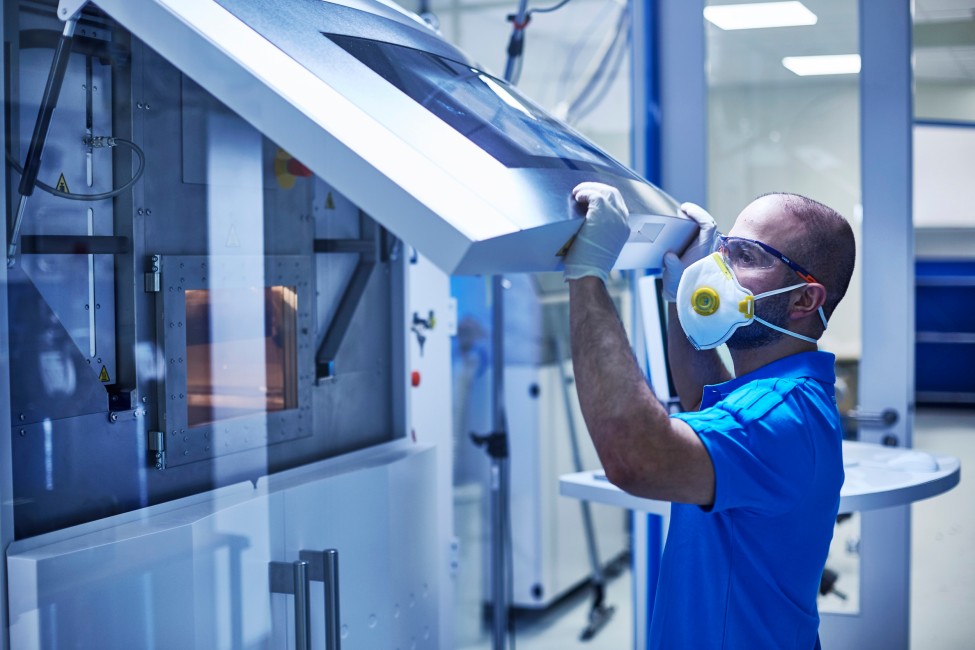Steel conglomerate Thyssenkrupp has formalized its joint venture with shipping maintenance firm Wilhelmsen. The firms signed a letter of intent to establish a joint venture to 3D print parts for ships. The companies have been working together on 3D printing for shipping since 2019. Our industry has hereto had a strong focus on prototypes, orthopedics, dental and aerospace. Thyssen and Wilhelmsen, however, see a lot of opportunities in the maritime sector for 3D printing. Indeed it is criminally underserved, with only Thyssen focusing on this along with the startup Ivaldi (and Wilhelmsen owns 14% of Ivaldi).

A submarine part printed by Thyssen
3D print services and OEMs pay very little attention to the maritime uses of 3D printing, so little in fact that there is almost no engagement with the maritime sector as a whole. Only through oil and gas companies is there any real engagement now. Given the maintenance, repair, and operations (MRO) needs of ships and the huge number of them, it is time for our industry to concretely engage with the maritime sector.
Thyssen states that in fleets, “50% of these vessels being older than 15 years, availability of parts is limited.” Furthermore, “This makes fulfillment of orders for maritime spare parts costly and complicated, and in fact, supply chain overheads involved may oftentimes far outstrip the cost of the part itself. Moreover, traditional manufacturing processes such as machining and casting often involve long lead-times stretching into months. As a result, ship managers must carry high stock levels of parts to ensure that they can fulfill orders, leading to high capital costs.”

A certified DNV part, a probehead for taking gas samples.
Singapore was clued into this opportunity early on and encouraged companies to undertake MRO-related 3D printing ventures in the city. It’s no surprise, therefore, that the joint venture is to be located in Singapore, with the technocratic city-state thereby getting a huge first-mover advantage in industrializing 3D printing for shipping, oil and gas, and related industries.
Thyssen’s Abhinav Singhal, Director of thyssenkrupp Innovations, states:
“We are already seeing very positive response from our Maritime customers on Additive Manufacturing adoption. They are realising the benefits from faster lead times, reduced costs and having more resilience in their spare parts supply chain. This is going to be a true gamechanger for the Maritime industry and we are proud to offer it alongside Wilhelmsen.”

This guy however has the right PPE for a cafe but not for a metal print facility.
On Linkedin he mentioned:
“Maritime fleets spend approximately $13 billion a year on spare parts. With Additive Manufacturing (AM), lead-time and cost can be improved as components are fabricated near vessel locations in just weeks or days. The partnership will specifically leverage on thyssenkrupp‘s deep expertise in AM alongside Wilhelmsen group‘s in-depth maritime expertise – and we couldn’t be more excited!”
Hakon Ellekjaer, Head of Venture, 3D Printing, Wilhelmsen, said:
“We are very excited to enter the next phase of our 3D printing journey, hand in hand with thyssenkrupp. This joint venture will, we believe, take the lead as the de-facto supplier of 3D printed maritime spare parts, continuing to bring the benefits of Additive Manufacturing technology to shipping companies by reducing the cost of spare parts, lead times and environmental footprint”,
Singapore itself is a huge port, but the JV aims to offer its 3D printing spare parts service to many ports worldwide. Wilhelmsen Ship Service is one of the largest logistics providers to the shipping industry worldwide. The firm is well placed to sell AM parts into its existing customer base and to sell a faster solution to downtime for shipping operators. Since Wilhelmsen carries so many parts in order to service its existing customers, the JV will have a real impact on its own operations, as well.
I really believe this to be the ideal business case for 3D printing. The capital costs for spare parts and the costs for delays are immense for the shipping industry as a whole. This could really bring significant advantages for operators of ships and lines. What’s more, initially they don’t have to be on board with 3D printed spare parts but eventually, they’ll encounter a delay so significant that they’ll try some out. In this way, they will familiarize themselves with the technology and its implications. Setting up this business is a significant stride forward for both firms. Inaction by others may yet give them an unassailable lead in 3D printing for the maritime sector.
Aerospace and 3D printing are a match made in heaven but with so many firms focusing on that one area, it is a competitive one. At the same time, there are very many industries and sectors that are unloved and have not been penetrated at all by 3D printing companies. As an industry we could do better collectively and individually in rethinking where 3D printing makes sense and what markets are opportunities there are out there beyond those that we all like.
Subscribe to Our Email Newsletter
Stay up-to-date on all the latest news from the 3D printing industry and receive information and offers from third party vendors.
Print Services
Upload your 3D Models and get them printed quickly and efficiently.
You May Also Like
3D Printing News Briefs, July 2, 2025: Copper Alloys, Defense Manufacturing, & More
We’re starting off with metals in today’s 3D Printing News Briefs, as Farsoon has unveiled a large-scale AM solution for copper alloys, and Meltio used its wire-laser metal solution to...
3DPOD 260: John Hart on VulcanForms, MIT, Desktop Metal and More
John Hart is a Professor at MIT; he´s also the director of the Laboratory for Manufacturing and Productivity as well as the director of the Center for Advanced Production Technologies....
3D Printing News Briefs, June 28, 2025: Defense Accelerator, Surgical Models, & More
In this weekend’s 3D Printing News Briefs, 3YOURMIND was selected to join an EU Defense Accelerator, and PTC has announced model-based definition (MBD) capabilities within Onshape. Finally, a study out...
EOS in India: AM’s Rising Star
EOS is doubling down on India. With a growing base of aerospace startups, new government policies, and a massive engineering workforce, India is quickly becoming one of the most important...

































